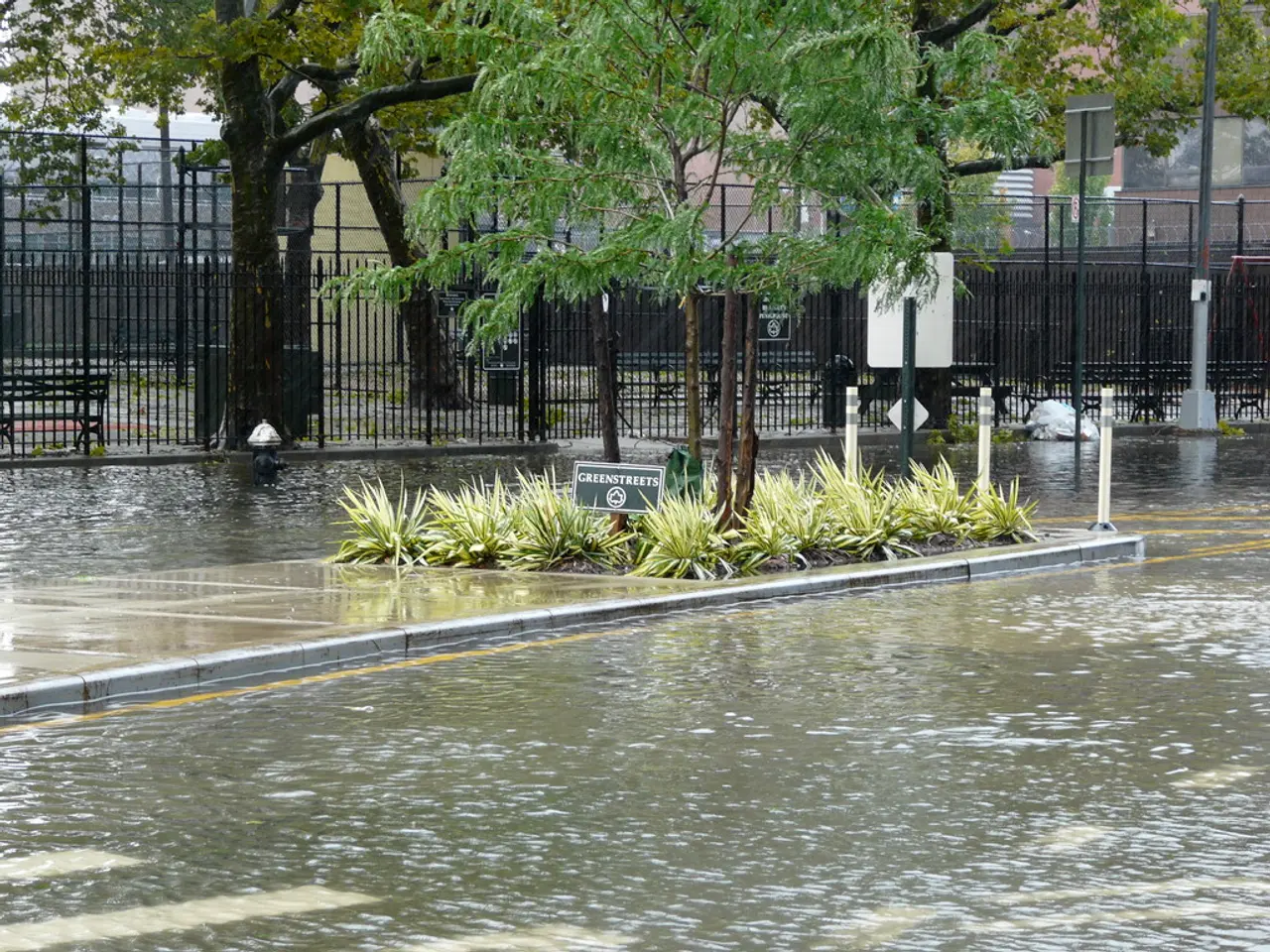Border Agreement Aimed at San Diego Sewage Crisis to Curb Ocean Pollution
The United States and Mexico have signed a landmark Memorandum of Understanding (MOU) on July 24, 2025, marking a significant step towards ending the decades-long flow of untreated sewage from Tijuana into the San Diego and Southern California region [1][2][4].
This MOU, signed by EPA Administrator Lee Zeldin (U.S.) and Mexico’s Secretary of Environment and Natural Resources Alicia Bárcena Ibarra, aims to fast-track infrastructure projects under Minute 328 of the U.S.-Mexico Water Treatment to achieve a "100% solution" by December 31, 2027 [1][3].
Key details and status of this MOU include:
- Signatories: EPA Administrator Lee Zeldin (U.S.) and Mexico’s Secretary of Environment and Natural Resources Alicia Bárcena Ibarra [1][2][3].
- Scope and Goals: The MOU includes provisions for future population growth and maintenance of the sewage system [1][3].
- Commitments: Mexico will obligate the remaining $93 million of Minute 328 funds that were previously unallocated [2][3]. The timeline to complete remaining projects under Minute 328 has been shortened [3]. New projects on the Mexican side will be added to manage future growth and system maintenance needs [3].
- Infrastructure: The U.S. International Boundary and Water Commission will complete expansion of the South Bay International Wastewater Treatment Plant, increasing capacity from 25 to 35 million gallons per day (MGD) by August 28, 2025, on a record 100-day construction schedule [1]. The San Antonio de los Buenos plant, which was recently restored, will have its capacity doubled by Mexico.
This agreement is a major environmental and national security win, addressing pollution that has harmed public health, closed beaches, hurt the economy on both sides of the border, and impacted Navy SEAL training in the area [1][2][4]. Local officials, including Jim Desmond, Chair of the San Diego County Board of Supervisors, have expressed the need for ongoing action on the Tijuana River, as it remains the primary source of pollution.
Mexican President Claudia Sheinbaum has hailed the agreement as a sign of binational progress. Since 2018, over 100 billion gallons of trash and industrial chemical-laden sewage have contaminated San Diego's seas. California is distributing air purifiers to Imperial Beach citizens due to illnesses caused by airborne contaminants from evaporated sewage foam.
By 2027, some projects will be completed four years ahead of schedule due to the MOU. The long-term goals of the MOU will be finalized with a new Minute by December 2025. Local proponents, such as Supervisor Paloma Aguirre, have called for a more straightforward agreement to avoid further complications. This article, written by experienced journalist and news reporter Sarah Tancredi, aims to inform the public and promote sustainable solutions to pressing environmental challenges.
References: [1] The New York Times. (2025). United States and Mexico Sign Agreement to End Tijuana Sewage Crisis. https://www.nytimes.com/2025/07/24/us/tijuana-sewage-crisis-mexico-us.html [2] Associated Press. (2025). Mexico Commits $93 Million to Tijuana Sewage Crisis Solution. https://apnews.com/article/climate-and-environment-mexico-california-san-diego-tijuana-pollution-7f6556a6d63c4e442c46a2f26c5a799a [3] Environmental Protection Agency. (2025). U.S.-Mexico Memorandum of Understanding on Tijuana Sewage Crisis. https://www.epa.gov/us-mexico-water-issues/u-s-mexico-memorandum-understanding-tijuana-sewage-crisis [4] The Washington Post. (2025). Tijuana Sewage Crisis: U.S.-Mexico Agreement a Major Win for Environment and National Security. https://www.washingtonpost.com/environment/2025/07/24/tijuana-sewage-crisis-us-mexico-agreement-major-win-environment-national-security/
- NGOs focused on environmental science and climate change are advocating for the implementation of ESG reporting in the cleanup projects associated with the Tijuana sewage crisis, urging corporations to consider the environmental impact of their investments.
- In light of the MOU addressing the Tijuana sewage crisis, organizations offering courses in environmental science are experiencing an increase in enrollment, as students seek to understand the political and scientific context of such environmental issues.
- Despite the positive news surrounding the Tijuana sewage crisis, general news outlets continue to report on the ongoing challenges related to climate change and its impact on water resources, such as the continual pollution of the Tijuana River.
- With the completion of new infrastructure projects under Minute 328 accelerated by the MOU, some experts are optimistic that similar solutions can be applied to address environmental and ESG concerns in other ESG-focused organizations and projects.
- As more environmental and national security wins, such as the Tijuana sewage crisis agreement, are achieved, it is essential for policymakers and decision-makers to incorporate sustainable solutions into their future endeavors, ensuring continued progress on pressing environmental challenges.






